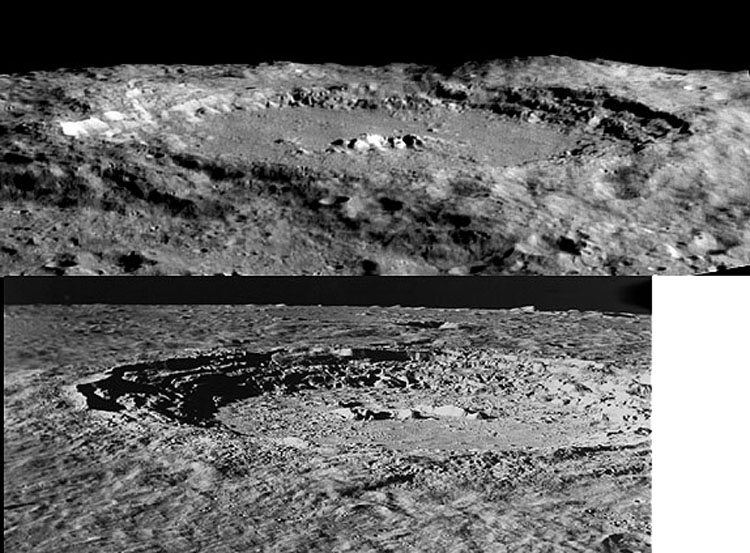February 17, 2012
Copernicus On the Limb

images by Frederic Mallmann, France and Apollo 17
Ya seen one crater, ya seen em all. Sometimes that's the way it feels. Because the energy involved in impact crater formation is
so immense, craters of similar size and freshness look pretty much alike. For example, consider these two behemoths. The bottom
crater is Copernicus, 93 km wide and famous for its great location for viewing from Earth. The top image is Hausen, 167 km wide
and hardly seen at all because it's right on the southwest limb beyond Bailly. Despite the difference in diameters the craters look very
similar - both have scarped walls with terraces that step down to the flat floor, which is littered with central mountains. Fresh impact
craters from 40 km in diameter to about 200 km look pretty similar. At larger sizes there is a transition to peak ring craters and then
multi-ring basins.
Chuck Wood
This is a classic LPOD from April 9, 2004 - were you reading LPOD then?
Technical Details
This magnificent image of Hausen (top) was taken by Frederic Mallmann using the 24" Cassegrain telescope at Ludiver Observatory
in northern France on 19 Oct. 2003. The telescope worked at f/16 and an infrared filter was used. A ToUcam was used with 1/25 sec
exposures and the best 400 of 2700 images were used. Full details here.
The Copernicus shot (bottom) was made with more expensive equipment: Apollo 17.
Related Links
Rükl plates 31 & 71
Mallmann Web Page
Lunar Orbiter IV View
Yesterday's LPOD: Another Country Heard From
Tomorrow's LPOD: Museum of Oddities
COMMENTS?
Register, Log in, and join in the comments.



